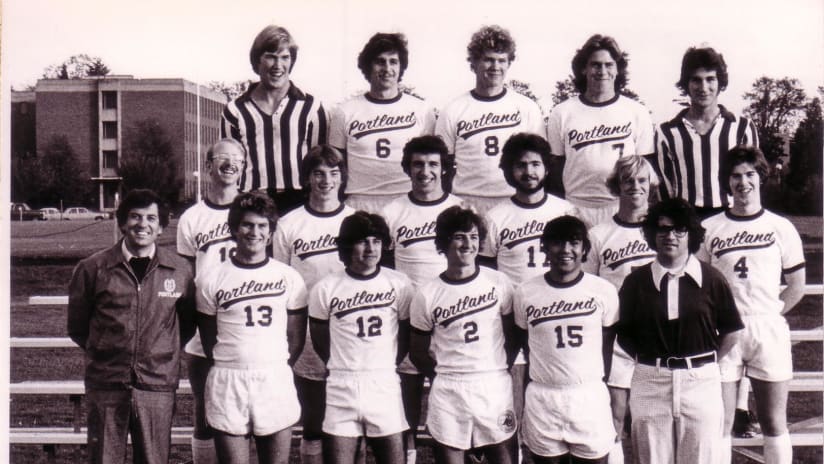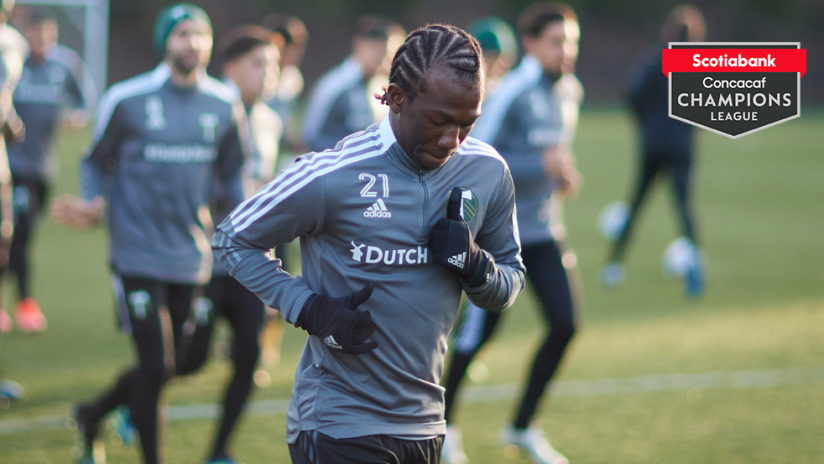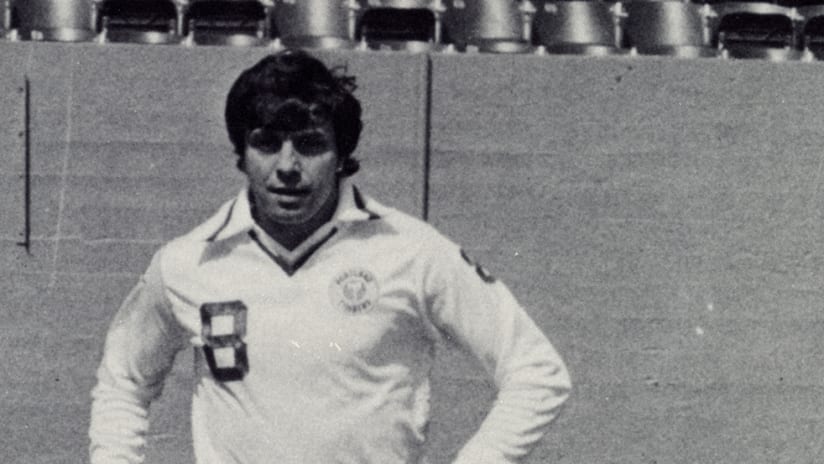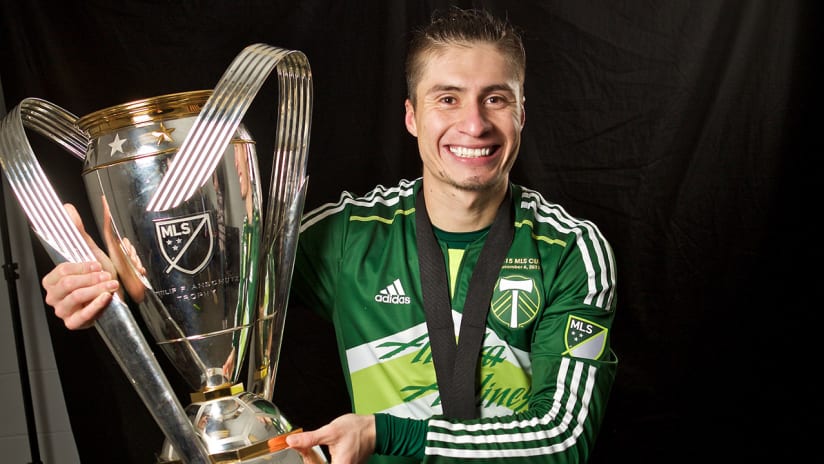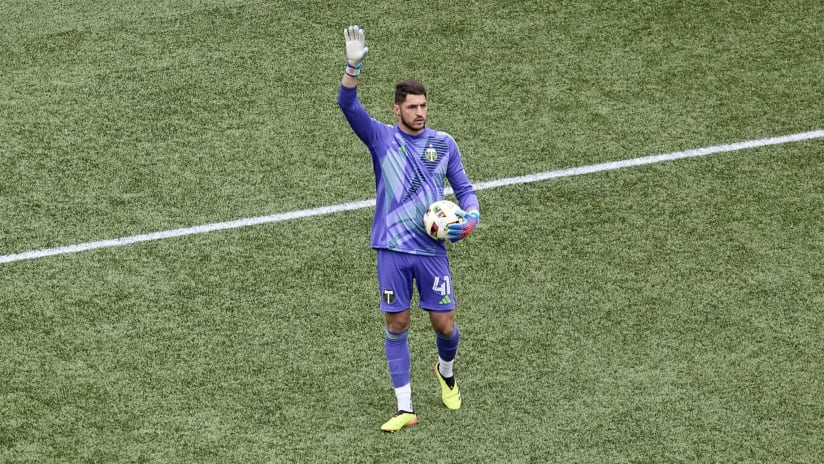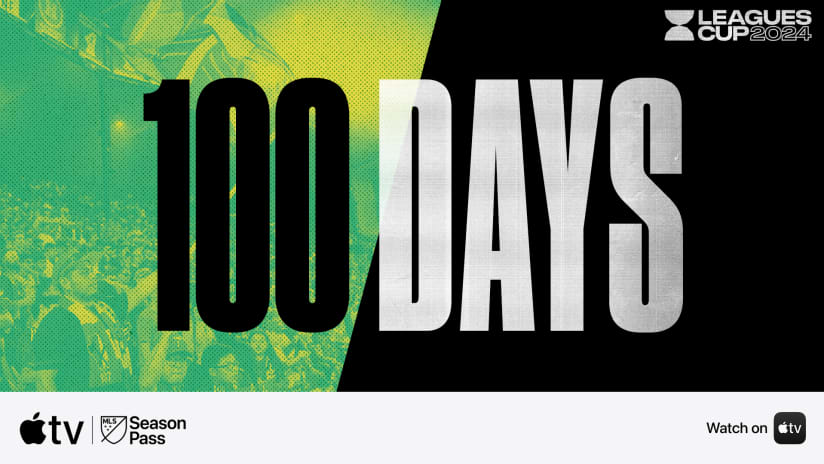Editor’s Note: You’ve heard Timbers Broadcaster John Strong on the radio and internet calling games for the Portland side for some time now. Heading to training, traveling on the road with the team, and watching every pass, flick, save, and shot, he knows this team inside and out.
With the 2011 MLS season about to commence this Saturday in Colorado (6:00 p.m. PT on ROOT Sports (formerly Fox Sports Northwest) and KXL 750), Strong gives an inside look at what the team will look like this year, the challenges it faces, and the outlook for the future.
In Part One, Strong broke down the goalkeeping and defensive sectors of the team. Part Two focuses on the midfield and forwards.
In addition to the unifying threads we saw in Part One of youth, athleticism, and talent, there's another common theme to the Timbers inaugural roster: each player has reason for a chip on their shoulder. They were left unprotected in the Expansion Draft, allowed to leave via trade, didn't have their contract renewed, or were cut from a preseason camp in a season gone by.
But rather than the Timbers being the MLS version of a Lost Boys Home, coach John Spencer and GM Gavin Wilkinson shrewdly put together a masterpiece from brush strokes that other teams felt weren't necessary to their own artwork. The belief is that each time the Timbers play an opponent, someone in green (or red!) is looking to prove something; and that could get dangerous very fast for the rest of MLS.
Let's have a look at the men who will be creating and scoring the goals this year, while also acknowledging their coach bellowing about not neglecting their defensive responsibilities of course...
Midfielders
The midfield in John Spencer’s system can also be thought of as broken up into different, distinct pieces. It’s up to the wide players to make those combinations with the onrushing outside backs, whether it means setting them up in dangerous spots on the field, or covering for their vacated defensive positions. Either way, it’s lots of running, and lots of split-second decisions to make.
Since I’m left-handed, we’ll start on that site. Jeremy Hall has the pole position over Ryan Pore, but that’s a very competitive spot in the Timbers’ depth chart (as is right wing, as we’ll see). Hall was actually pushed back into defense for some reason by New York the last two years, so you can expect to see him trying to show the league just how much of a mistake it was to put him so far away from goal. His combinations on the left side with teammate Rodney Wallace lifted Maryland to the 2008 national title; can that same combo produce great results with the Timbers.
Pore is one of the most intriguing parts of this machine. After leading the nation in goals his senior year at Tulsa in 2004, he drifted through four years with Kansas City in MLS (overlapping slightly with current teammate Jack Jewsbury) with just three goals to show for it. Then he shows up in Portland, averages a goal every two games, and leads the league in scoring last year. Which is the real Ryan Pore? One key difference to these two: whereas Hall is more likely to be sending in crosses from the wing, Pore is a right-footer on the left side, and prefers to cut in and run at the defense.
The Timbers’ right wing is perhaps the most interesting spot on the field. No. 2 overall SuperDraft pick Darlington Nagbe has coaches and pundits alike drooling at his potential: the Hermann Trophy winner as the best college player last fall (in leading Akron to the national title), he’s tipped for a future with the US National Team. But, while he rehabs sports hernia surgery early in the season, here comes another youngster who was described in similarly glowing terms not long ago, Sal Zizzo.
Part of the US U-20 World Cup team that dazzled in 2007 with names like Adu, Altidore, and Bradley, Zizzo has dealt with inconsistency and injury since leaving UCLA after his sophomore year in 2006. Zizzo is more of a classic winger, looking to get deep on the outside and cross, Nagbe has instincts to go for goal, and might migrate to an attacking center mid or deep-lying forward role as the season rolls along. Also providing an option on that side, or perhaps the middle given how good Zizzo and Nagbe are, is Kalif Alhassan. The 20-year-old caught the eye of GM Gavin Wilkinson at a youth tournament in his native Ghana last year, and while he’s capable of offensive brilliance (like his chipped goal in Puerto Rico that made me lose my mind), he’s still rounding into a complete midfielder.
Speaking of complete midfielders, one of the sure things early in the season in the middle of the park is Jack Jewsbury. Another player the Timbers moved quickly on once he became surplus to Kansas City’s new formation, the team’s captain will be in his ninth MLS season in 2011, and will be counted upon to show it. His partner to start the season will be Peter Lowry, who struggled to break through a crowded midfield in Chicago the last three years.
Now, rather than play those two as a straight up attacking/defending combo, or have them play side-by-side, it seems as if the idea is more to give Jewsbury the bulk of the “controlling” responsibility in the middle. That is to say that he’s the safety valve for any players that get under pressure, and the one looking to kick start offensive movements. While that often sees him drifting forward, and Lowry covering defensively behind him, Lowry has been an attacking midfielder in his career as well, so nothing is in stone.
Putting pressure on those two for their starting spots are Adam Moffat and James Marcelin. Moffat is more of a defensive-minded midfielder, while the Haitian international Marcelin showed flashes of brilliance winning balls and controlling the middle in last season’s D-2 edition of the Timbers. Also looking for time in the middle is another D-2 holdover in Rodrigo Lopez, who strikes a dead ball (or a live one) with the best of them, but is still trying to put the rest of his center mid game together.
Forwards
Up top the Timbers feature a quartet of forwards who may have to do more with less during the season as their teammates are pinned back, siege-like, into defense. At least that’s if the national experts are to be believed.
Former national team striker and MLS All-Star Kenny Cooper leads the line after his return from two years abroad. What’s curious about Cooper is that rather than the classic target forward his 6’3” frame would suggest he is, playing close to goal and looking to score exclusively with his head, Cooper actually prefers the ball at his feet, whether to hold up and distribute to onrushing teammates, or to turn and run at defenders.
Colombian Jorge Perlaza, who is being tipped by some as a breakout player league-wide this year, is more of a classic goal poacher. Fast as blazes, with an unorthodox way of striking the ball that can fool goalkeepers, he’s looking to use his speed, get the ball on the move, and get in behind the defensive line. Given the difference in styles, it may look like the Timbers are playing one forward in front of the other in a 4-4-1-1, with Cooper dropping back to get the ball on his feet, and Perlaza riding the offside line, looking to make through runs.
Eddie Johnson (who trailed only Pore in the D-2 scoring charts last year) takes after Cooper’s style, while Ugandan international Brian Umony is very similar to Perlaza, so the forward tandem works together much the same regardless of who is actually on the field. Also available (though unlikely to see much time) is supplemental draft pick Spencer Thompson. I mention him here though because darned if the guy isn’t big, strong, and uses his body very well to hold off defenders and flick balls along for teammates. For some reason, when I’ve seen him in practice, I always say to myself, “there could be something there with this kid.”
It’s a fluid game and, as such, all of this will stay moving about. But this is our inaugural MLS Portland Timbers. Coach Spencer has put together with General Manager Gavin Wilkinson a team that they believe can compete with the top tier of North American soccer. 2011, here we come.
Feature
Strong's Notes: A season preview of the Portland Timbers, Part Two



